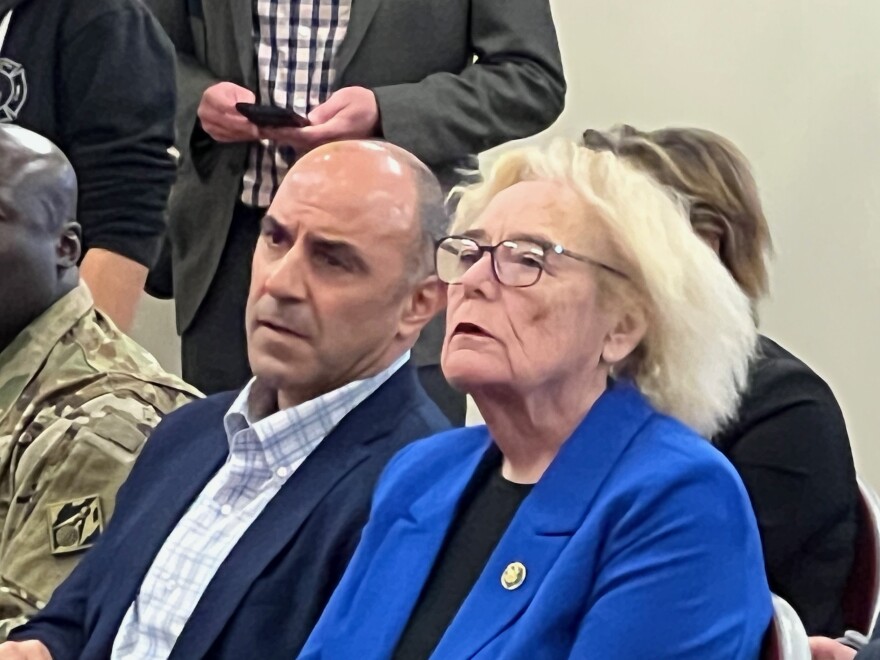An agreement signed on Tuesday between local leaders and the Army Corps of Engineers cleared the way for construction to begin next year on a replacement for the ailing Pajaro River levee. The long-awaited project will provide 100-year flood protection for the communities of Pajaro and Watsonville, compared to the eight- to 10-year protection of the current structure.
The signing ceremony at Watsonville City Hall came 57 years after Congress first authorized rebuilding the inadequate levee system, directing in the Flood Control Act of 1966 that the work be done “expeditiously.” The levee’s failure in March, which flooded the town of Pajaro and drove thousands from their homes, spotlighted a federal funding system that prioritized flood control projects in rich communities over disadvantaged ones.
Congressman Jimmy Panetta, who attended the ceremony, said that system is starting to change.

“We’ve got to start building projects that protect people, and not just prioritizing industry and corporations, but actually the people that make the industry and corporations,” he said.
The new agreement designates the Army Corps of Engineers as manager of the project, in partnership with the Pajaro Regional Flood Management Agency, which will maintain the new levee system once it is complete.
Two years ago, the project won $149 million in federal funding under the Bipartisan Infrastructure Law. The state will ultimately pick up all of the expected $210 million in non-federal costs, which officials say is the first time in state history that the local community has not been required to help fund construction for such a project. And last month, Gov. Gavin Newsom signed legislation sponsored by Assembly Speaker Rob Rivas, D-Salinas, to waive some state permitting requirements. That clears the way for groundbreaking next summer, a year ahead of schedule.

“There's no better example than this levee project about working together to get things done,” Rivas said at the signing ceremony.
But the project is far from being done. While construction will begin in earnest next year, it could take up to ten years to complete, at a total cost of nearly $600 million. Congresswoman Zoe Lofgren, who has represented the area since the 2021 redistricting, said that with the Army Corps of Engineers now officially a partner, it will take the lead in making annual budget requests. She said that means the project should be less susceptible to the whims of Congress.
“The Army Corps will be asking for funds to complete its approved projects,” she said. “And so it's subject to annual appropriations, but it wouldn't be the same fight that it's been up to this time.”
But in the meantime, residents will be stuck with an aging levee system that has failed five times in its 75-year history.
Repairs on the breach from last winter are nearly complete, and Pajaro Regional Flood Management Agency Director Mark Strudley said additional work over the summer including clearing debris from the river channel will leave the system in slightly better shape than it was at this time last year. But he said there is only so much that those quick fixes can do to meaningfully improve the levee’s safety.
“It's still a levee that was built in the 1940s, and it's still vulnerable to failure,” he said. “That's why we're rebuilding them.”
Correction: A previous version of this story included a photo that was described as levee repairs, but in fact showed unrelated construction.



